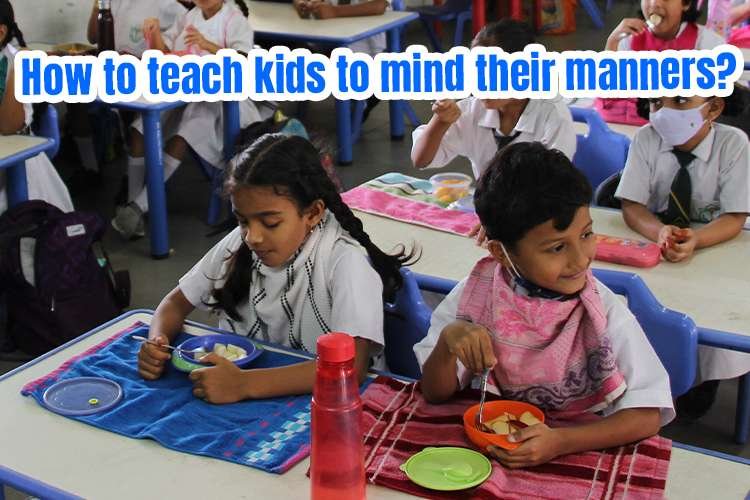In today’s fast-paced and ever-changing world, teaching kids to mind their manners is increasingly crucial. Polite and respectful behavior not only reflects well on children but also plays a vital role in their personal and social development. However, instilling good manners in children can be challenging. This guide will provide effective strategies to teach children the importance of minding their manners, helping them build positive relationships and confidence in social interactions.
What are the different ways to teach kids manners?
Teaching kids manners is essential for their social development. This presents various effective methods to instill good manners in children, promoting positive behavior and respectful interactions. Some of the ways to teach kids manners are mentioned below:
1. Modeling polite behavior lead by example –
Children are keen observers and tend to imitate behaviors they witness. As a parent or caregiver, it is essential to model polite behavior in everyday interactions. Use “please” and “thank you” when making requests and expressing gratitude. Show respect and empathy towards others, whether it’s a neighbor, family member, or stranger. By consistently exhibiting good manners, you create a positive environment that encourages children to emulate the same.
2. Setting clear expectations by defining boundaries –
Establishing clear expectations is crucial when teaching kids about manners. Explain what behavior is acceptable and what is not. Clearly define boundaries regarding polite speech, appropriate language use, and respecting personal space. Reinforce these expectations consistently and gently remind your child when they deviate from the established boundaries. By doing so, you create a structure that guides children towards mindful behavior.
3. Engaging in role-play make it fun and interactive –
Children learn best through play and interactive activities. Engage your child in role-playing scenarios that require the use of good manners. For example, pretend to be a customer at a restaurant, and let your child play the role of the server. Encourage them to take orders, serve food, and interact politely. This makes learning fun and allows children to practice and refine their manners in a safe and controlled environment.
Explain the “Why?” :
Children are naturally curious, and understanding the reasoning behind good manners can enhance their motivation to practice them. Take the time to explain why certain behaviors are considered polite or respectful. For instance, explain that saying “excuse me” when interrupting a conversation shows consideration for others. By providing logical explanations, you enable children to develop a deeper understanding of the importance of minding their manners.
4. Positive reinforcement praise and rewards –
Positive reinforcement is a powerful tool when teaching children new behaviors, including manners. Acknowledge and praise your child’s efforts when they display good manners. Use specific and descriptive language to highlight their actions. For example, say, “I appreciate how you held the door open for Grandma. That was thoughtful and kind.” You can also create a reward system where children earn points or stickers for consistently demonstrating good manners. Celebrate their achievements to keep them motivated on their manners journey.
Physical Etiquette – Key Practices
Physical etiquette refers to behavioral norms and practices that govern our physical interactions with others. It includes actions and manners that demonstrate respect, consideration, and politeness towards individuals in various social settings.
1. Handshakes and greetings –
Teach children how to greet others politely with a handshake, maintaining eye contact and a friendly smile.
2. Respecting personal boundaries –
Teach children the importance of respecting personal space and boundaries. Emphasize the need to ask for permission before touching someone or their belongings.
3. Polite gestures –
Encourage children to offer their seat to someone in need, hold the door for others, and practice good sportsmanship.
Digital Etiquette – Navigating the Online World
1. Kind online communication –
Teach children to be respectful and considerate when communicating online, using appropriate language and avoiding cyberbullying.
2. Privacy and consent –
Emphasize the importance of respecting others’ privacy and seeking permission before sharing someone else’s photos or information.
3. Online gratitude –
Encourage children to express gratitude for online favors or help received, such as sending a thank-you message or emoji.
Social Graces – Politeness in Social Situations
1. Introducing oneself –
Teach children how to introduce themselves confidently, offering a firm handshake and making eye contact.
2. Saying “please” and “thank you” –
Emphasize the importance of using these phrases when receiving help or favors in social settings.
3. Making apologies –
Teach children to apologize sincerely when they make a mistake or hurt someone’s feelings, and to offer a genuine resolution.
By incorporating these creative strategies into your parenting approach, you can successfully teach children to mind their manners. Remember, leading by example is crucial, and consistent practice will help instill good manners in children. By emphasizing effective communication, table manners, respect for personal space, digital etiquette, and social graces, you are equipping children with valuable life skills. Cultivating good manners will benefit their relationships, foster personal growth, and contribute to their overall success. Start nurturing these essential qualities in your children today and watch them thrive in the world.


